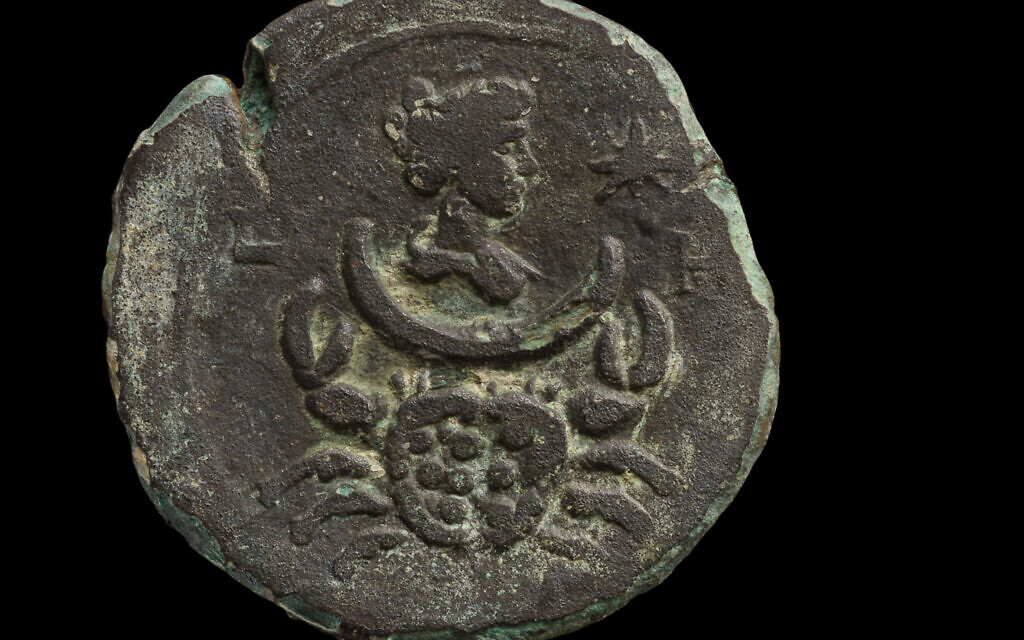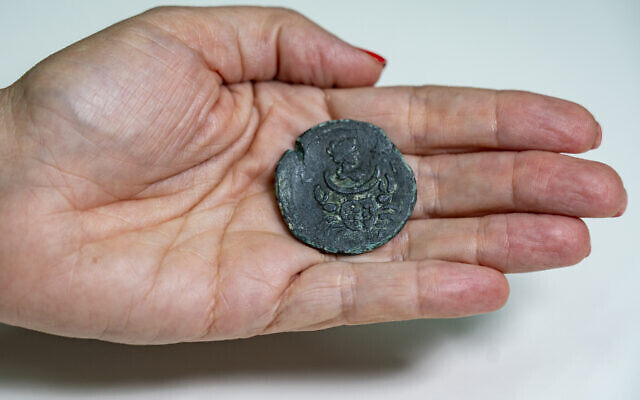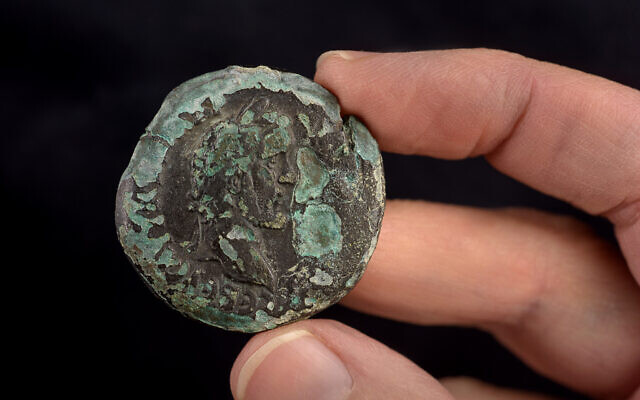Currency minted during reign of Emperor Antoninus Pius in 2nd century CE; discovered on seabed during survey carried out by Israel Antiquities Authority’s Marine Archaeology Unit

A rare, 1,850-year-old bronze coin depicting the Roman Moon goddess Luna was recently found off the coast of Haifa, the Israel Antiques Authority said Monday.
The coin shows Luna above a depiction of the zodiac sign Cancer.
On the other side of the coin is the head of Roman Emperor Antoninus Pius (138–161 CE), during whose reign it was minted.
The Israel Antiquities Authority’s Marine Archaeology Unit found the coin on the seabed during a survey to protect antiquities from coastal development. The IAA did not say exactly when the coin was recovered.
Unit director Jacob Sharvit said it was the first time such a coin has been found off Israel’s coast.
“It is a rare addition to the National Treasures collection,” he said.
“These finds, which were lost at sea and disappeared from sight for hundreds and thousands of years, have been remarkably well preserved; some are extremely rare and their discovery completes parts of the historical puzzle of the country’s past,” he said.

According to IAA numismatics expert Lior Sandberg, who identified the coin, it belongs to a series of 13 coins, 12 with the signs of the zodiac and another with a complete zodiac wheel.
Sandberg said the coin was produced in Alexandria, Egypt, and is dated “year eight,” the eighth year of Antoninus Pius’s rule, or 144/145 CE.
Antoninus’s reign was the quietest of the Roman Empire, coming at the height of the period of the Pax Romana, or Roman peace, and Antoninus himself was not from the military, was never in battle, and never even left Rome, the IAA said.
“During his rule, the empire’s relations with the Jews were greatly improved, the decrees of Hadrian were revoked, and Jews were allowed to practice circumcision, the IAA said.
“These steps led to amicable relations between the emperor and Rabbi Yehuda ha-Nasi,” the statement said, referring to the second century CE rabbinic leader who composed the Mishnah.

Israel Antiquities Authority director Eli Eskosido said that over the past decade Israel has come to view the sea as more than just a boundary and it is “now recognized as an integral part of it, in terms of its cultural heritage in addition to security considerations and strategic and economic concerns.”
“Israel’s territorial waters contain natural resources and cultural assets that must be explored and protected in light of different interests and potential development,” Eskosido said in the statement.
“The maritime survey off Haifa is part of this process. The rare coin recovered during the survey is a vivid reminder of the importance of the survey,” Eskosido said.
While the waters near Haifa are not disputed, Israel is involved in indirect maritime border negotiations with Lebanon linked to offshore gas exploration and extraction.
Last year a recreational diver pulled a 900-year-old Crusader sword from the sea floor off the Carmel Coast. Waves and undercurrents had apparently shifted sand revealing the item, the IAA said in a statement at the time.
As reported by The Times of Israel
